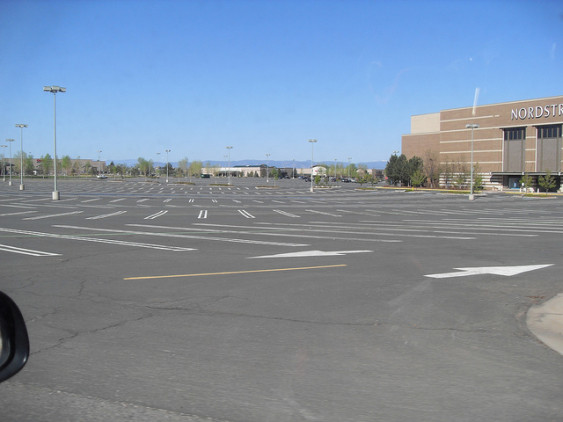
My younger son, almost 19, and my daughter, 20, are learning to drive this summer. (Car-less folks like us are sometimes late to the car-head rites of passage.) So I’m temporarily appreciating the wide open spaces of empty pavement at regional malls and big-box stores. Some of these parking lots are so big they generate their own mirages, and they’re vacant enough that my kids can’t do much damage.
Such parking expanses are a modern puzzle: they are so rarely full that you have to wonder why hard-headed business types ever built them. The answer is simple. They had no choice. Local laws made them do it.
For more than half a century, cities have mandated oversized quotas of on-site parking at stores, offices, houses, apartments and condominiums, and all other types of new buildings—even bars. The result has been millions of parking stalls that stand empty even at their hour of peak demand. No doubt about it: we have legislated the waste of land.
In the Old Town area of suburban Beaverton, Oregon, for example, barely half of legally required parking spaces had cars in them when surveyed in 2007, leaving some 1,500 local slots idle. Many cities demand five stalls (or about 1,500 square feet of parking) for every 1,000 square feet of retail space; the big-box hardware-merchandiser Home Depot surveyed actual parking utilization at 17 of its stores and found only half that many spots used at peak hours (see page 35).
Such findings, occasionally mentioned in urban planning circles, have in recent years received empirical validation in Cascadia, where authorities have undertaken rigorous surveys of parking at multifamily buildings.
Car Prowling
Officials in each of the Northwest’s large metropolitan areas have sent survey takers out in the still of the night when most people are cozy in their beds, their cars tucked into their designated slots. The surveyors’ mission was to prowl through apartment and condominium lots and garages, record empty and full spaces, and compare their tallies with the number of apartments.
What they found was surprisingly consistent. In King County, Washington, for example, the Right Size Parking (RSP) project visited more than 200 buildings and found one parked car per occupied dwelling, on average. It also found an extra 0.4 empty stalls per occupied housing unit: almost one third of parking was idle.
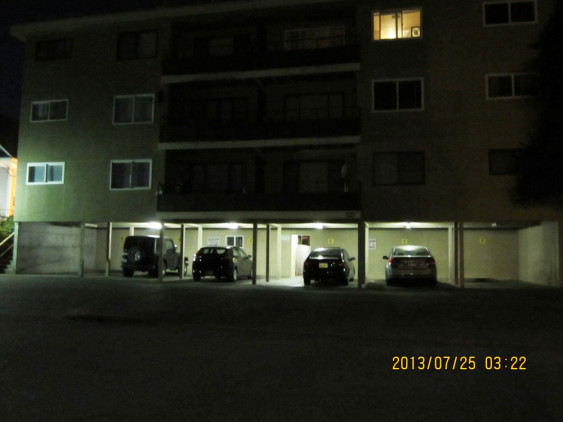
Just so, in British Columbia, MetroVancouver surveyed 80 buildings and reported one parked car and 0.4 empty spaces per occupied unit, on average. In Portland, Oregon, a survey of 15 multifamily buildings tallied an average of 1.1 parked cars per dwelling, plus 0.4 empty slots (see page 13). Everywhere, then, spaces exceeded cars by roughly a third.
These figures are averages, and they conceal other patterns. In suburban zones, the oversupply was larger, although it remained approximately proportional. In King County, suburban buildings had 1.2 parked vehicles per unit, plus 0.6 vacant stalls. Buildings in downtown Seattle, meanwhile, had just 0.6 cars and another 0.2 empty spots per dwelling.
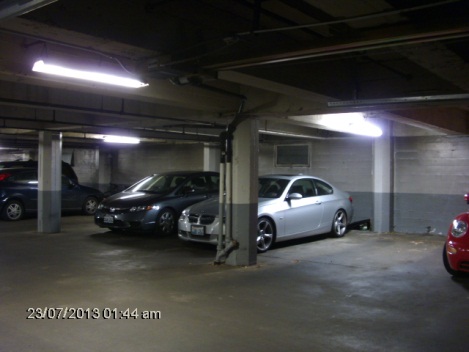
Similarly, across the region, condo buildings had more spaces and cars than rentals had, because condo owners are more affluent. In greater Vancouver, BC, for example, rental buildings had 0.6 occupied parking spaces per apartment and 0.4 empties, while condos had one parked car and 0.3 empties per occupied dwelling (see page 44). In Victoria, BC, similarly, 33 apartment buildings investigated in the wee hours by enterprising university students had 0.5 cars parked per unit and 0.4 vacant slots (see page 21).
Force Feeding
Why do buildings have so much extra parking? Do builders overestimate demand? No doubt, some do; others undoubtedly underestimate it. But the real reason for excess parking is that cities require it. Careful studies in Los Angeles and New York that disaggregated parking decisions down to the individual parcel level found that developers tend to build exactly as much parking as local codes require (see page 698).
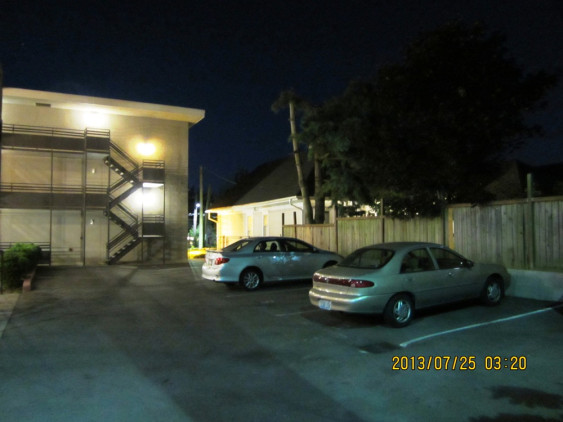
Developers would build less, on average, were it not for parking requirements, but that does not mean they would build none at all. Local laws do not mandate dishwashers, but most builders install them, because customers want them. Most customers want parking, too, so builders install it. Lowering or striking parking requirements lets builders judge for themselves how much vehicle storage to provide.
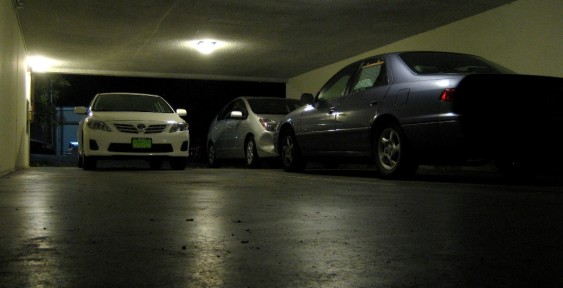
Cascadian evidence aligns well with the California and New York studies. The Right Size Parking (RSP) analysis did not simply count spaces, it also constructed a detailed model for predicting actual parking usage based on buildings’ locations and characteristics. After the model proved robust in its predictive powers, RSP analysts used it to estimate how much parking would likely be used on every building lot in King County where zoning allows multifamily buildings. They concluded that at 45 percent of such lots, the number of spaces required under local law exceeds the number likely to be used—that is, the law would force-feed parking, causing builders to install more than warranted.
When the analysts removed from the calculation all parcels in the city of Seattle, which recently wrote sweeping exemptions into its multifamily code, the figure rose to 82 percent: suburban cities almost all require more parking than will find takers. In fact, outside of Seattle, localities’ parking quotas exceed usage by an average of 0.4 spaces per dwelling—approximately the amount by which parking supply actually exceeds current parking usage.
Mapping Excess
In the map below, which shows the suburban expanse between Seattle and Tacoma, RSP analysts color coded all parcels where multifamily buildings are allowed. The turquoise areas are the few where the RSP model predicts that residents will, on average, use more spaces than local law requires builders to install. Most of the turquoise is in Renton.
Gray areas on the map are places where the legal parking minimum is 0 to 20 percent greater than the parking utilization predicted by the RSP model. For example, most of the multifamily parcels in Auburn are gray. Auburn requires 1.5 parking spaces per apartment or condo, but the RSP model predicts only 1.3 of them will be full in the midnight hours. Auburn requires a modest oversupply.
Peachy yellow shows areas where local rules mandate 20 to 60 percent more parking than residents will use. Federal Way, for example, demands 1.7 spaces per typical apartment or condo, though the RSP model predicts only 1.2 parked cars per unit, on average. Federal Way legislates a large oversupply.
Dark orange fills parcels where city law requires at least 60 percent more parking than will likely find parkers. Des Moines’s land-use code calls for 2.1 spaces per unit, on average, but only 1.3 of them will hold cars in moonlight, according to RSP—a massive oversupply.
Starker contrasts stand out (below) between urban Seattle (mostly turquoise) and its eastern suburbs (yellow and orange). Seattle has far fewer parking spaces and parked cars at its multifamily buildings than do suburban cities. It also has much lower requirements. In fact, in 2011, Seattle dropped multifamily parking requirements to 0.5 slots per unit in areas served by frequent transit; in the city’s most walkable districts with excellent transit service—midrise and highrise areas which it designates urban centers and urban villages—it erased parking requirements entirely. Consequently, most multifamily-zoned lots in the city are turquoise: places where parking mandates are below predicted parking utilization. In these areas, as new buildings work their way through the process of financing, design, and construction, the market—rather than parking minimums—will begin to determine how much of each parcel will hold housing and how much will hold auto storage.
Bellevue, Redmond, and other Eastside cities have more parking and use more parking than Seattle. They also require more parking. Bothell, for example, requires 2.2 spaces per unit in most of the city, although the RSP model predicts just 1.3 parked cars per multifamily dwelling. Bothell’s mandated parking surplus is the largest in King County, according to RSP’s analysis.
The Waste Land
Expressed as stalls per apartment, the waste of space may not seem egregious: a fraction of a parking space. What’s the big deal? Each space is expensive, as I’ll detail in a later article, so the cost of housing rises and the supply shrinks.
Besides, a fraction of a spot per apartment adds up to vast acreage. British Columbia and the Northwest states of Idaho, Oregon, and Washington have 2 million apartments, condominiums, and other dwellings in multifamily buildings, according to data from BC Stats and the US Census Bureau. For each of these dwellings, if the region has an extra 0.4 parking spaces, that’s 800,000 empties. Each space likely occupies at least 325 square feet of pavement, including access and maneuvering room. All told, that’s 260 million square feet of superfluous parking: more than 9 square miles of vacancy that, unlike mall lots, isn’t even useful for driver’s ed. It is, with apologies to T.S. Eliot, the waste land.
Remember: that’s just the extra parking spots—the ones idle around 2 a.m.—and it’s only the excess parking at apartment and condo buildings. It ignores the far-more numerous ones at single-family homes, on the street, at offices, factories, churches, schools, park-and-ride lots—and the malls where my kids have been practicing.
The tally of all those spaces; their mirage-like promise of benefits, which turn on closer inspection to a handful of dust—these are topics for another day.
In the meantime, you might kill a little time playing around with the Right Size Parking calculator. It’s impressive.
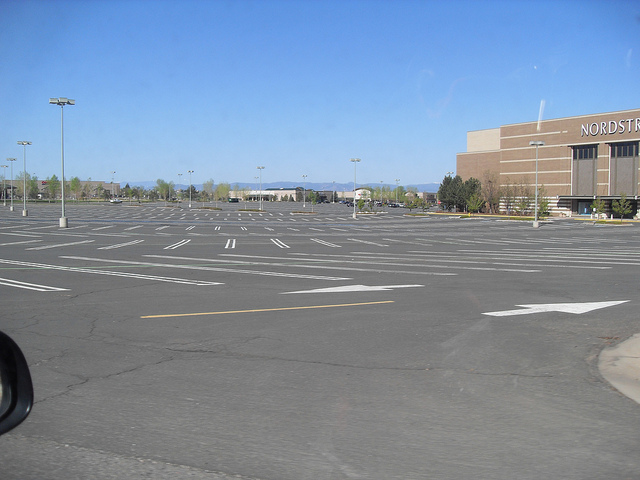
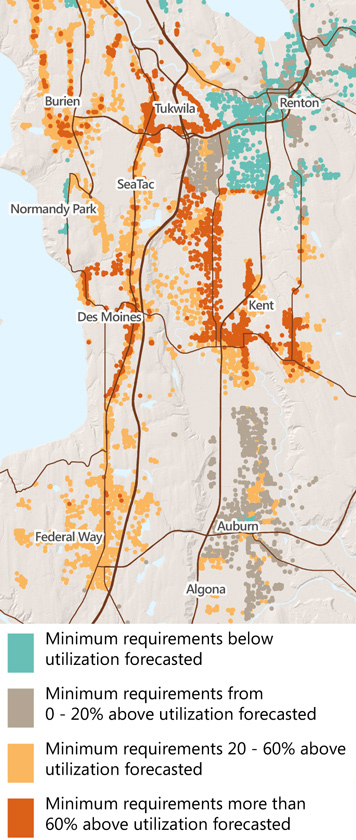
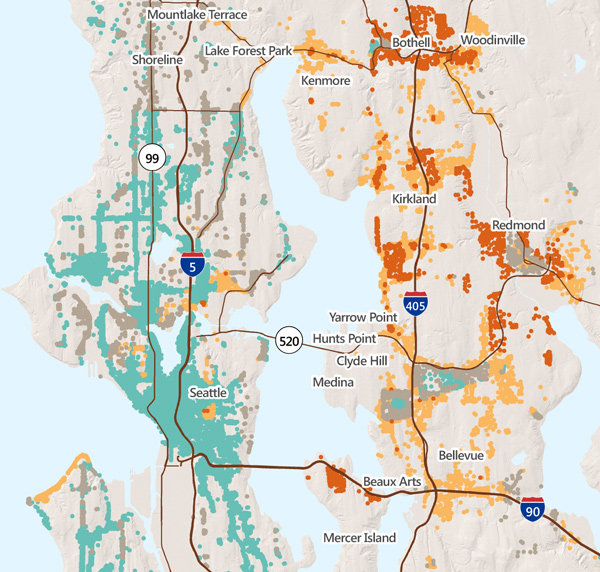

Comments are closed.